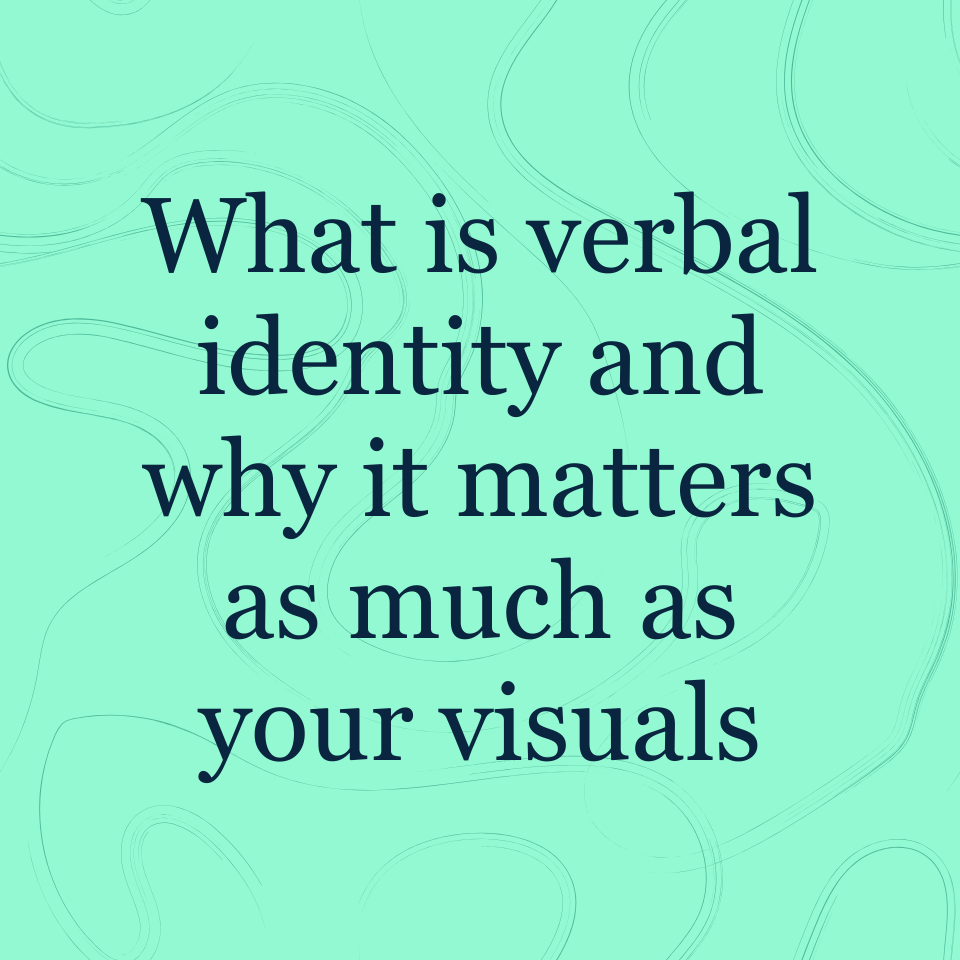Design is what connects us to objects and the world. Over the decades, technology has become woven into the fabric of our culture and truly transformed it. Design trends in the tech space mirror (and shape) what’s happening in the world around us; adapting to the shifting landscape of the tech industry and the needs of people, all while navigating uncharted territory in forming a new industry.
If you haven’t yet, we recommend that you download The three ages of tech branding report to better understand the concept of the “three ages of tech brands.” The framework captures the evolution of the tech industry and people within it. Important technological advancements happened in each age that have influenced how brands show up in the world.
- First age of tech: Emphasized trusted reliability and optimization of technology.
- Second age of tech: Focused on disruptive innovation, personalizing tech solutions for the average consumer while challenging traditional norms.
- Third age of tech: Prioritizes intentionality, with companies and brands becoming more human, inclusive, and focused on the impact of technology on people’s work and lives.
Mapping the evolution of tech brand design trends over time allows companies to better understand how to connect and resonate with today's audience. At the end of this article, we provide a guideline that you can use to ensure that your brand design is living up to the standards of the third age of tech.
Brand design trends that mark the first age of tech
The first age of tech spans roughly 30 years from the 1960s to the 1990s. The start of an incredible technological revolution. The beginning of things can be rocky. We try to make sense of the new while pioneers shape how things will be. It’s no different for brands trying to make their mark in new territory. Such is the case for brands in the first age of tech.
Here we see brands establish their legitimacy, doing everything they can to appear credible, trustworthy, and professional. They want their products to communicate productivity, efficiency, and enhanced business operations. These brands wanted to be taken seriously. The design trends – clean cuts, straight lines, men in suits, a sea of reds and blues, and leaning heavily on wordmarks – support the quest to cater to the “company man.”

Here are some high-level trends:
- Clean cuts, line it up. Does anyone have a ruler? Logos and wordmarks in this era are so precise, so solid. Nothing is getting through that’s not supposed to. Letters are highly stylized and wow, do we see a lot of straight lines. These lines are reflective of how the machines, transfer and storage systems functioned.
- Red, blue, and sometimes black. You can have any color you want, as long as its red or blue. Here we see how blue and red were used predominantly to communicate confidence, stability, and capability. IBM was an early leader for blue team, while other brands follow suite. While we see some outliners venture into black and grey, most brands stood squared in another part of the color wheel. Safety in numbers.
- Wordmarks, make it snappy. Make it an acronym and we’ve got a brand. Now, not every company used an acronym, but we did start to see a big shift with companies like IBM, SAP, that shortened their names to acronyms that still exist today. Logos were popular, too. This is when the Cisco bridge, and the Apple apple were born.
- Machine me. Ads from this time aim to get folks comfortable with new tech by showing people interacting with it. But not using it necessarily, just holding it or standing next to it. This helps the machines feel accessible. While to a 21st century eye it may make you cringe, it’s a way to usher in something new, without leaving humanity behind.
Looking at this age from our comfortable perspective in the 2020s, this age feels a cold and corporate. There’s less connection to a brand mission or purpose, and we don’t feel that human connection apart from a few ads. But it’s important to remember, these companies were trying to be taken seriously with a product that was abstract to most people. Every industry has to start somewhere.
Brand design trends in the second age of tech
Okay, so now in the second age, things get interesting in a different way. Hello vibrance! Hello people! Hello color (well, red, yellow, green, and blue…oh so many shades of blue)!
Brands in the second age of tech are embracing the art of relatability and friendliness. Thank you, internet! We see the first age completely disrupted. There’s a growing interest and focus on more user-friendly and intuitive interfaces as technology expanded from offices and cubicles to homes, classrooms, and everyday people. The timeframe for this age is less set in stone but spans a few decades from the mid-1990s to the early 2010s. As with all things though, there are some trendsetters, and some companies playing catch-up.

A few key trends are important to note in design in this age:
- Let’s play. We see a break from corporate rigidity and the embrace of soft friendliness. Brands use curves and bubbles to reach consumers in a more personal, human way.
- Pop that (primary) color. Brands like Apple were already experimenting with color in the first age, but the embrace of primary color spreads to the far reaches of tech brands in this era. Color is used to convey accessibility, diversity, creativity, and dynamism. It’s easier to imagine more with a bit of color.
- Beyond the logo to design systems. With an ever-increasing number of options to choose from, tech brands see the power of well…branding. Not just a logo or a wordmark, but really thinking about how the brand touches the entire experience. We see more visual identity systems being developed to make sure that brands are recognizable at every touchpoint, not just on the box or on the screen, but in how products look, feel. and sound.
The rise of the internet to the masses, a computer on our desk then in our pocket, and social media set this age off to establish new trends and pave new paths forward, redefining how tech brands show up in our lives. These seismic shifts required different things from design. But similar to the first age tech brands, those making waves in the second age also had to make everyday people comfortable with technology infiltrating their lives. It takes time.
Brand design trends in the third age of tech
Welcome to our current(ish) age. Starting roughly around 2019, we see tech brands as we do most other brands. In a time when nearly every company, school, movement, person relies on tech as an intrinsic, embedded way of life. Tech brands have undergone a transformation. In this age, they have the potential to more meaningfully, and intentionally, reach humanity. Brands are required to be “consumer grade,” which really just means they have to be understood and loved by people regardless if they’re at work, home, or out in the world. Brands in this age are expected to connect deeply with people, giving them a sense of belonging, purpose, and empowerment in a digital world that would look foreign to our ancestors.

Trends that are taking shape:
- Color me gradient. 50 shades of gradients, melt all the crayons in the box and mix them together. However you want to think about it, we see an explosion (or a seeping?) of colors, moving like amoebas across our screens and devices. This offers more flexibility, more color ownership potential via combinations. It also makes tech feel much more…alive.
- Make it feel real. In this age, we see more nuanced color palettes and a more natural, human-centric take on photography. We see references to humans and the natural world, because tech goes where we go. The brand experiences is designed to reflect that freedom of mobility.
- Speaking of mobility. Every. Thing. Moves. Motion and 3D graphics have helped bring brands off two dimensions and into a much more vibrant, dynamic way of being. Brands use motion to tell stories big and small. Motion is no longer a nice-to-have, but a must-have.
Now, it can often be hard to see the era you’re in for what it is, but the trends in the third age are so pronounced, they’re easy to see. What’s less clear to see yet is how the latest tech innovation of AI will shift this third age and potentially start a fourth.
Each age demonstrates how tech brand design has shaped the world and adapted to the changing needs of people. In the first age, design highlighted reliability and optimization, mirroring the trust in emerging technology. This evolved into a focus on cutting-edge innovation, personalized tech, and challenging traditional norms in the second age.
Today, design prioritizes intentionality, inclusivity, and the human impact of technology as companies bring purpose into their brand foundations to create deeper meaning for audiences.
Key elements for a successful tech brand in the third age
Below we’ve outlined the key elements that tech brands can use as a guideline to create a compelling and resonant presence to ensure a deep connection with audiences and sustainable relevance in an ever-evolving market:
Purposeful connection
- Create a brand that is deeply connected with your audience, providing a sense of belonging, purpose, and empowerment.
- Ensure the brand resonates with people in all aspects of their lives—work, home, and beyond.
Human-centric design
- Design experiences that reflect freedom of mobility, ensuring that the brand feels accessible and integrated into everyday life.
Vibrant and dynamic visuals
- Utilize a wide range of colors to create a lively and flexible visual identity.
- Experiment with color combinations to enhance brand recognition and convey a sense of liveliness and adaptability.
Motion and 3D graphics
- Integrate motion graphics and 3D elements to make your brand feel dynamic and engaging.
- Use animation to tell stories, illustrate concepts, and create a more immersive brand experience.
- Ensure that motion is not just an add-on but a core element of the brand’s visual strategy.
Consistency across touchpoints
- Develop a cohesive visual identity system that ensures brand recognition across all platforms and touchpoints.
- Maintain consistency in design, color usage, and motion to create a unified brand experience.
Flexibility and adaptability
- Design a brand that can evolve and adapt to changing trends and technologies.
- Be open to experimenting with new design elements and styles to stay relevant and appealing.
Whether your company is well-established or is at the start of the brand journey, it’s helpful to take a step back and think about the role brand design plays across your organization.
Download The three ages of tech branding report to access a checklist to learn what you can be doing to better your brand for today’s tech-infused world.
.jpg)




